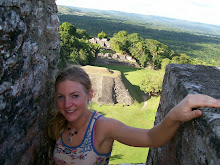


http://ecosystems.wcp.muohio.edu/studentresearch/climatechange02/agriculture/images/LATIN.jpg
http://www.biochange-lab.eu/images/10.jpg
http://images.google.com/imgres?imgurl=http://www.grida.no/_res/site/Image/series/vg-lac/large/10.jpg&imgrefurl=http://www.grida.no/publications/vg/lac/page/2741.aspx&usg=__3Ci_pTOoCRlHiucjdUycUAmYh7c=&h=717&w=595&sz=35&hl=en&start=42&um=1&itbs=1&tbnid=U1PRExk88QVreM:&tbnh=140&tbnw=116&prev=/images%3Fq%3Dclimate%2Bchange%2Blatin%2Bamerica%26start%3D40%26um%3D1%26hl%3Den%26sa%3DN%26rlz%3D1W1RNWO_en%26ndsp%3D20%26tbs%3Disch:1
http://www.mja.com.au/public/issues/179_11_011203/smi10724_fm-1.gif
As we discussed last week, visualization is a key technology and method for analyzing as well as presenting climate change data. Geovisualization is especially important for such issues as climate change because it is used by decision makers as well as the general public, which makes it even more crucial to display the data in an easily-understandable way.
I decided to delve further into the question of climate change after our discussion last week, particularly analyzing geovisualization techniques for my regional focus: Latin America. First of all, although we have seen different examples in our class/readings of various geovisualization techniques, choosing a specific case study about a particular region, made me realize the role of the type of data (i.e. region-based, temporal, spatial, multi-variate, station-based, etc.). As we have learned, the type of data also determines the type of visualization (i.e. 2D maps vs. 3D globes).
In the first map of South America, rather than 2D/3D being a factor, it is the two types of visualization techniques that we should be discussing. One is the dot problem we discussed a couple of weeks ago, which in this case also does not seem to be the best way to convey population/major cities and the colors which depict elevation, which in my opinion is also not the best way to show this information.
The second example using remote sensing and it is a common image used to show climate change in Latin America but it does not have a legend. The third, bar graph showing CH4 emissions in Latin America and the Caribbean is very simple and straightforward. On the other hand, although example 4 looks simple, I do not quite understand it and would like to further discuss it in class.
We should also take into consideration that climate data visualization faces different user groups with different skill levels, purposes qualifications, interests, and from different disciplines as is demonstrated in this class. Another lesson I have also learned from class exercises and further exploring data visualization and its application is that applying visualization to scientific data, like climate change is not straightforward. This is due to the various available tools, techniques as well as parameters. Sophisticated technologies, such as graphical user interfaces, visualization design (as discussed in class in the context of simple v. more complex) are essential for bridging the gap between such systems and users. At best, they reduce the hurdles for applying the full functionality of advanced, interactive data visualization systems.

No comments:
Post a Comment